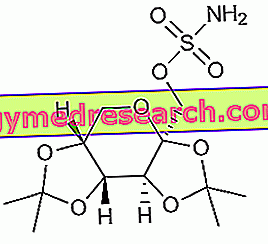Definition
Paronychia is an infection of the periungual tissue, which causes redness, heat and pain. Usually, it is an acute pathological process, but recurrent or persistent cases also occur.
In acute paronychia, the microorganisms involved are usually Staphylococcus aureus or streptococci and, less commonly, Pseudomonas or Proteus spp.
These microorganisms penetrate through an epidermal lesion, which can be caused by the detachment of a flap of nailed cuticle, by trauma of the nail sulcus or by chronic irritation, such as prolonged contact with water and detergents.
In the big toes, the infection is often a consequence of an ingrown nail.

Other Photos Acute Paronychia and Chronic Paronychia
Chronic paronychia almost always appears in subjects with chronically damp hands (eg dishwasher, bartenders and domestic), especially if diabetic or immunosuppressed.
Candida is often present, but its aetiological role is not clear; the eradication of mycetes, in fact, does not always coincide with the resolution of the pathological process (it could therefore be an irritative dermatitis with secondary fungal colonization).
Most common symptoms and signs *
- Pain, heat, redness and swelling of the finger
- Articolar pains
- Edema
- Temperature
- Pus formation
- Subungual hyperkeratosis
- Swollen lymph nodes
- onychomadesis
- blisters
Further indications
Acute paronychia appears along the lateral and / or proximal nail grooves and occurs over hours or days, with localized pain, swelling, redness and a feeling of heat.
Along the margin, and sometimes under the nail, a purulent secretion appears. Paronychia can spread to the tips of the fingers, which become extremely painful. Infrequently, the infection penetrates deep into the finger, causing an infective tenosynovitis of the flexors.
In chronic paronychia, the nail groove is sore and red, but the purulent collection is almost never present. Eventually, a loss of the cuticle occurs with the ungueal sulcus detached from the nail plate. In this way a channel is formed which allows the entry of irritants and micro-organisms. The nail plate becomes thickened and distorted and undergoes a gradual browning.
The diagnosis is based on the inspection of the affected area. Several diseases - including squamous cell carcinoma, proximal onychomycosis, pyogenic granuloma and herpetic patereclerum - can cause changes that mimic paronychia. These conditions must be considered, especially when the treatment is not initially effective. In suspected cases, a biopsy must be performed.
The treatment consists of performing compresses and hot baths and using antibiotics (eg dicloxacillin, cephalexin or clindamycin). In diabetics and other patients with peripheral arterial disease, the big toe paronychia must be checked for signs of cellulite or more serious infection (eg extension of edema or erythema, lymphadenopathy and fever). In the presence of a fluctuating swelling or visible pus, a drainage should be performed.
With regard to chronic paronychia, on the other hand, therapy involves the administration of topical drugs that can help improve the clinical picture, such as corticosteroids and immunosuppressants (eg tacrolimus). Furthermore, it is necessary to keep the hands dry and to favor the growth of the cuticle to close the space between the groove and the nail plate.
If it is necessary to come into contact with water, instead it is necessary to use gloves or barrier creams.



